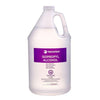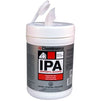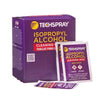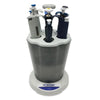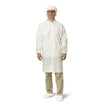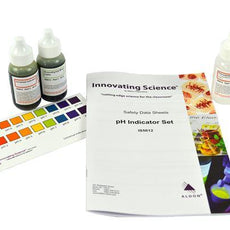- No products in the cart.
Menu
Start typing to see products you are looking for.
Start typing to see products you are looking for.
Browse Categories
-
PPE Apparel
Masks
-
 KN95 Respirator Mask, 4 layers, Box of 50 -LP-KN95-001BOX50
$79.00
KN95 Respirator Mask, 4 layers, Box of 50 -LP-KN95-001BOX50
$79.00
-
 Harley L-188 N95 Particulate Respirator Mask, Box of 20 - LP-L188-N95
$36.00
Harley L-188 N95 Particulate Respirator Mask, Box of 20 - LP-L188-N95
$36.00
-
 Lab Pro Mask KN95 (K-N95) Pack of 50 - LP-MASK2-K95 - 40% OFF
Lab Pro Mask KN95 (K-N95) Pack of 50 - LP-MASK2-K95 - 40% OFF
$125.00$75.00 -
 Lab Pro 3ply Earloop Disposable Mask (Non-Surgical) (Box of 50) - 84% OFF
Lab Pro 3ply Earloop Disposable Mask (Non-Surgical) (Box of 50) - 84% OFF
$57.00$9.00
-
-
Chemicals
-
Wipes
-
Microscopes and Lighting
-
Hand Tools
Hand Tools
-
 Excelta Scissors - 346B - Micro Self-Opening - Straight - SS - Blade Length .38" - 346B
$32.16
Excelta Scissors - 346B - Micro Self-Opening - Straight - SS - Blade Length .38" - 346B
$32.16
-
 Excelta Scissors - Straight Slim Blade - SS - Blade Length 1.25" - 271
$9.83
Excelta Scissors - Straight Slim Blade - SS - Blade Length 1.25" - 271
$9.83
-
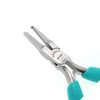 Excelta Pliers - Forming Dog Leg - Carbon Steel - 907-89B
$320.73
Excelta Pliers - Forming Dog Leg - Carbon Steel - 907-89B
$320.73
-
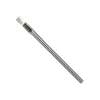 Excelta Brushes - 213A-N - Cleanroom Safe - Straight - SS/Statig09 Bristles - 213A-N
$17.58
Excelta Brushes - 213A-N - Cleanroom Safe - Straight - SS/Statig09 Bristles - 213A-N
$17.58
-
-
Gloves
Powder Free Nitrile Gloves
-
 TrueForm Powder-Free Nitrile Exam Gloves Royal Blue (Small), Case of 1000 (TF-050-095-RB) (10 boxes 100/Box) - N301342
TrueForm Powder-Free Nitrile Exam Gloves Royal Blue (Small), Case of 1000 (TF-050-095-RB) (10 boxes 100/Box) - N301342
$199.00$99.00 -
 PowerForm Nitrile Exam Gloves Black (Medium), Case of 1000 (PF-90BK)(10 boxes 100/Box) - N716883
$237.00
PowerForm Nitrile Exam Gloves Black (Medium), Case of 1000 (PF-90BK)(10 boxes 100/Box) - N716883
$237.00
-
 TrueForm Powder-Free Nitrile Exam Gloves Royal Blue (Medium), Case of 1000 (TF-050-095-RB) (10 boxes 100/Box) - N301343
TrueForm Powder-Free Nitrile Exam Gloves Royal Blue (Medium), Case of 1000 (TF-050-095-RB) (10 boxes 100/Box) - N301343
$199.00$99.00
-
-
Swabs and Applicators
Foam Tipped Swabs
-
ESD & Static Control
ESD & Static Control
-
Lab Equipment
-
Pipettes
-
Furnaces and Ovens
Furnaces and ovens
-
All Products
- Services New
-
Industries Served
- Brands
-
Information
-
Blog
-
All blogs
- Aerospace
- Calibration of Lab Equipment
- Chemicals and Solvents
- Cleanroom and Critical Environment
- Electric Battery Labs
- ESD Safety
- Lab Consumables
- Lab Glassware and Glassware Equipment
- Lab Pro’s Top 5
- Laboratory Equipment
- Laboratory Safety & Lab Efficiency
- Medical Adhesives
- Medical Device Industry
- Microscopes, Lighting & Inspection
- News
- Our Blog
- Pipettes
- PPE and Safety Apparel
- Press Release
- Science Education
- Solar Energy Labs
- Sustainable & Eco-Conscious Lab
- Swabs
- Tweezers and Cutters
- Ultrasonic Cleaning
- VMI for Lab Supplies
-
All blogs
- Contact
Life Science
Advance the research done within the life science curriculum using Lab Pro’s life science instruments. A wide range of tools, including DNA staining, artificial urine, coliform test kits, pH indicators, and more, can be used for varied scholastic applications such as observing chromosomal development, nutrient examination, and other laboratory simulations. Acquire quality life science instruments only here at Lab Pro.
If you did not find what you are looking for, give us a call or chat with a customer service representative. We also offer next-day service in California and same-day service for will-calls.
Science Education
If you did not find what you are looking for, give us a call or chat with a customer service representative. We also offer next-day service in California and same-day service for will-calls.
- Home
- All Categories
- Science Education
- Life Science
- Sort by
- FILTER BY PRICE
-
-
Below $100.00
-
$100.00-199.00
-
$200.00-299.00
-
$300.00-399.00
-
$400.00-499.00
-
Above $500.00
-
- FILTER BY COLOR
-
-
- FILTER BY SIZE
-
-
S
-
M
-
L
-
XL
-
2XL
-
3XL
-
- FILTER BY BRAND
-
-
Adidas
-
Camel
-
Motorola
-
Rolex
-
Samsung Galaxy
-
Seiko
-
Sony
-
Ph Indicator Set Innovating Science -IS5012
$10.25Kit Includes:
30mL Phenolphthalein, 1% Solution
30mL Universal Indicator
30mL Bromothymol Blue, 0.04%
Gram's Stain Kit -IS5011
$31.50The Gram stain is one of the most important differential staining techniques used by microbiologists to determine if bacteria are Gram-positive or Gram-negative.
Introduction To Enzyme Catalyzed Reactions -IS3502
$116.00Living organisms require enzymes to regulate chemical reactions necessary to maintain life. The activities in this kit are designed to introduce students to the concepts of enzymes. Students perform a...
Photosynthesis The Hill Reaction -IS3500
$76.00The ability to convert light energy into usable chemical energy (photosynthesis) makes life possible. The process of photosynthesis can be broken down into two parts known as light and dark...
Diagnosis Of White Blood Cell Counts -IS3106
$37.50While white blood cells, or leukocytes, only account for approximately 1% of the total number of cells found in blood, they are a critical part of the immune system, protecting...
Chromatography Of Plant Pigments -IS3051
$62.00Chlorophyll is the most prevalent and well-known plant pigment related to photosynthesis. It is not, however, the only plant pigment necessary for photosynthesis to occur. Other pigments are involved in...
Plant Food - Nutrient Deficiency In Plants -IS3050
$68.50Using the materials provided, students will be able to examine the effects of nutrient deficiency on plants. Specially prepared nutrient solutions (included in the kit) will allow students to deprive...
Owl Pellet Dissection Lab Activity -IS3016
$135.00Owls have a specialized digestive tract which helps them expel the indigestible parts of their prey in pellet form. Dissecting an owl pellet can teach students the concepts of food...
Atp Muscle Kit -IS3015
$144.00Students can observe and measure how muscles contract. The muscles are shipped in glycerol which extracts most of the water soluble material leaving muscle tissue that can be identified and...
Intro To Microbiology - Bacterial Growth And Staining -IS3014
$84.50Bacteria, good and bad, is all around us. In this activity students will collect and grow bacteria and then learn techniques for studying the bacteria they have grown. They will...
Testing Food For Nutrients -IS3013
$65.00This experiment will help students understand the importance of proteins, carbohydrates, and lipids in living organisms. They will learn to identify a positive test result for proteins using biuret reagent...
Cellular Respiration - What Sugar Does Yeast Like Best? -IS3012
$39.25In this experiment you will expose living yeast cells to three different sugars. The sugars used will be glucose, sucrose, and lactose. When living yeast cells are exposed to these...
Electrophoresis: Agarose Separation Of Dyes -IS3011
$55.00Introduce your students to this valuable separation science in a safe and colorful manner. Unlike DNA and other molecules which cannot be seen during electrophoresis, this activity uses dyes that...
Mendelian Genetics: Genes And Probability Lab Activity -IS3010
$76.00In this activity, students can simulate Mendel’s work and determine patterns of inheritance. Using special chips and Innovating Science’s exclusive “double dice,” students will be able to simulate both monohybrid...
Replacement Urine For Is3008 -IS3008-REF
$36.00Refill Kit Includes:
4 Simulated Urine Samples, 250mL each
Patient X
Patient Y
Patient Z
Control
Urinalysis Using Simulated Urine Lab Activity -IS3008
$69.99Urinalysis, one of the oldest medical diagnostic tests performed, is to this day still one of the most common. In this activity, students will use simulated urine to avoid the...







